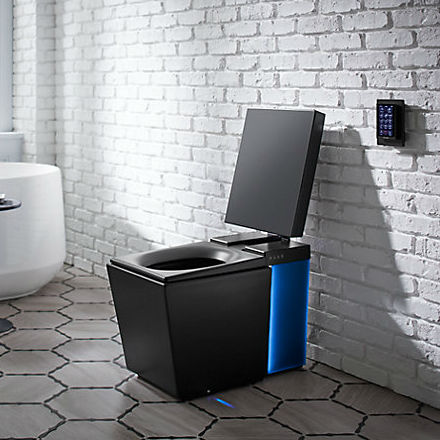Smartphones are so 10 years ago. Today, people are upgrading their lives by opting for smart homes. Even the humble bathroom is getting an overhaul thanks to smart toilets. These appliances come in all kinds of shapes and sizes, with a multitude of features ranging from the convenient to the slightly strange. Besides being modern and swanky, these toilets have the benefit of appealing to the environmentally-conscious crowd. Here’s what you need to know about these high-tech toilets, including how much you can expect to pay for one.
Features of a Smart Toilet
You can choose a base model or you can splurge and go for all the bells and whistles. Plus, there are the smart toilets that fall in between. It is ultimately up to you, although you will have to drop some serious dough to afford one of these appliances.
Some of the many features that you can find in a smart toilet include things that can make your trip to the bathroom a bit more comfortable. This includes heated seats and speakers that can sync up to Bluetooth for a bit of in-bathroom music. Some smart toilets feature bidet and dryer attachments for extra cleanliness.
There are other functions that can save you time and energy in keeping your toilet neat and tidy. For example, some models are self-cleaning while others have sensors that will alert you of a leak or go into an emergency flush mode during power outages. These high-tech amenities can come in handy for busy homeowners.
Internet connectivity is what makes these toilets so smart. Whether they link to a control panel in your home or to your smartphone, they will alert you if anything goes awry. That could make a world of difference if your toilet starts to overflow or leak. Other features, such as nightlights, voice assistants, and slow-closing lids, can be especially helpful for those with disabilities.
So, How Much Will This Cost?
All of those bells and whistles will cost a pretty penny. Depending on the model you choose, the price tag could range from hundreds of dollars to a few thousand. For those who can afford it, a smart toilet can make taking care of the home a bit easier.
Pros and Cons of Smart Toilets
As you might expect, smart toilets can look quite impressive. Imagine an aesthetic that mimics a sci-fi robot or the smooth pebbles at the bottom of a waterfall. If anything, this kind of toilet will increase your home’s cool factor.
The convenience of these toilets is hard to match. Take the no-touch flushing as an example. This mechanism allows you to keep your hands off of the flusher as a sensor in the toilet picks up movement around the seat, prompting it to flush. Some models are programmed to flush when you wave your hand over the sensor, another hands-free option. Either way, the no-touch flushing feature can reduce the spread of germs, which is ideal for families (and companies) during cold and flu season.
Smart toilets can also have the foresight not to flush if there is a chance of overflowing. The toilet can sense if there is a clog in the bowl or trapway, and if there is, it won’t allow the flushing mechanism to work. This can be great for families with small children.
As more and more homeowners are trying to be environmentally conscious, the energy efficiency of smart toilets is a huge bonus. Owners of these devices will quickly notice that their water bill has decreased since installing the fixture. For each flush, the toilet decides how much water is necessary to dispose of waste and clean the bowl, and they can use as little as 0.6 gallons per flush.
That being said, smart toilets do run off of electricity, so they may not be as “green” as they seem. Some smart toilets are battery-operated, which can be a good alternative for those who don’t want to do the electrical work necessary to wire in a new smart home appliance. Just like with a remote or smoke detector, you will need to routinely change the batteries, but it can be better than paying for electrical installation.
Keep in mind that not all smart toilets are created equally. Different models will have their own list of features, as well as potential downsides, so it’s important to shop around.

